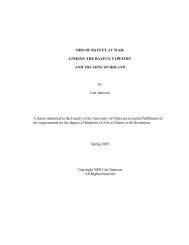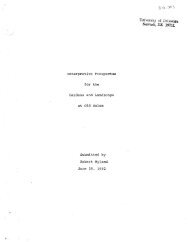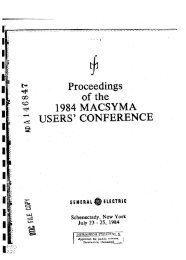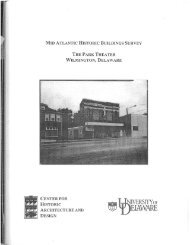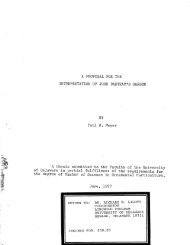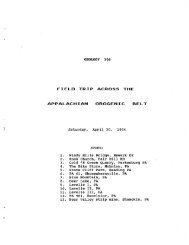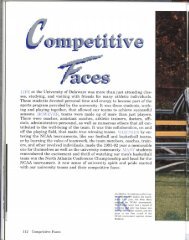Transpiration and the Ascent
Transpiration and the Ascent
Transpiration and the Ascent
Create successful ePaper yourself
Turn your PDF publications into a flip-book with our unique Google optimized e-Paper software.
202 7. Tlanspiration<br />
Table 7.1 Relative Water Losses by <strong>Transpiration</strong> <strong>and</strong> Evaporation from an Illinois<br />
Cornfield during <strong>the</strong> Period from Mid-June to Early September<br />
Total evapo- <strong>Transpiration</strong> Tbnspiration Excess of -transpiration<br />
from from covered as percentage Total evapotranspiration<br />
uncovered plot plot of evapotran- precipitation over rainfall<br />
Year (cm) (cm) spiration (cm) (cm)<br />
1954 32.25 16.5 51% 18.5 1375<br />
1955 34.50 17.5 51% 23.0 1L50<br />
1957 3375 15.J 45% 24..0 975<br />
aFrom Peters <strong>and</strong> Russell (1959)<br />
The quantitative importance of transpiration is indicated by <strong>the</strong> fact that a<br />
well-watered Kansas corn plant loses about 200 liters of water during a growing<br />
season or nearly 1300 tons per acre (= 475 metric tons per hectare or about<br />
28 cm of water) (Miller, 1938, p. 412). An Illinois corn field transpired an<br />
amount of water equal to 60 to 90% of <strong>the</strong> precipitation during <strong>the</strong> growing<br />
season (Peters <strong>and</strong> Russell, 1959) <strong>and</strong> <strong>the</strong> combined evaporation from <strong>the</strong> soil<br />
<strong>and</strong> transpiration from <strong>the</strong> crop (evapotranspiration) exceeded <strong>the</strong> precipitation<br />
during <strong>the</strong> growing season, as shown in Table 7.1. In contrast, a deciduous forest<br />
in <strong>the</strong> more humid sou<strong>the</strong>rn Appalachians transpired 40 to 55 cm per year,<br />
which used only 25 to 35% of <strong>the</strong> annual precipitation (Hoover, 1944), as<br />
shown in Table 7.2.<br />
Several hundred grams of water are required to produce a gram of plant dry<br />
matter (Table 7.3), but about 95% of this is lost in transpiration. If it were not<br />
for <strong>the</strong> water dissipated by transpiration, a crop could be grown with <strong>the</strong> water<br />
Table 7.2 Amounts of Water Lost in Various Ways by a North Carolina Watershed<br />
Covered with a Deciduous Forest (1940-1941) <strong>and</strong> <strong>the</strong> Increase in Runoff<br />
Which Followed Cutting of All Woody Vegetation <strong>and</strong> Elimination of<br />
<strong>Transpiration</strong> (1941-1942)a<br />
Process 1940-1941 1941-1942<br />
Precipitation<br />
Interception<br />
Runoff<br />
Soil storage<br />
Evaporation<br />
<strong>Transpiration</strong><br />
Note. Data in centimeters.<br />
aFrom Hoover (1944),<br />
158.0<br />
16.6<br />
53.4<br />
-004<br />
39.7<br />
48.7<br />
15804<br />
9.5<br />
93..0<br />
9.7<br />
46..0<br />
00.0<br />
--<br />
-



